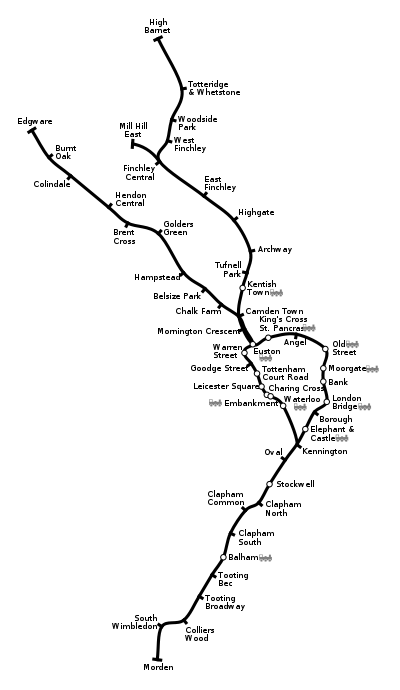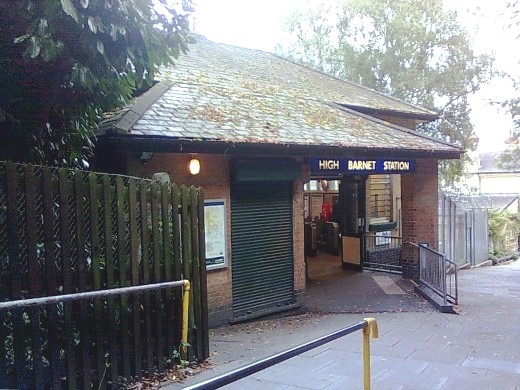
High Barnet station, the terminus for the High Barnet branch of the Northern line. The station was opened in 1872 by the Great Northern Railway with Underground trains using the track in 1940 and mainline services ceasing a year later. The platform buildings show evidence of the original Victorian architecture.
|
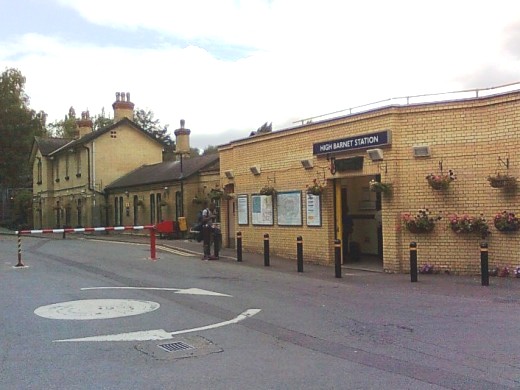
Further down the hill, the newer station building. The original station building can be seen on the far left of the picture.
|
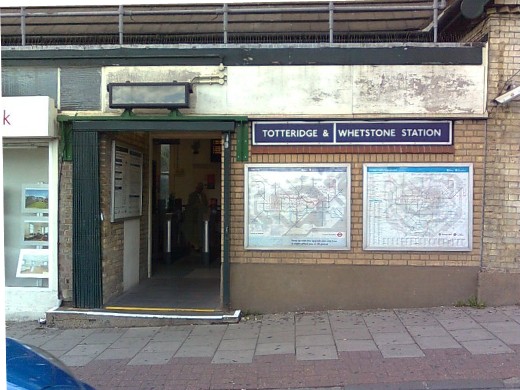
Totteridge & Whetstone station, another Great Northern Railway station with track used by the Northern line from 1940.
|
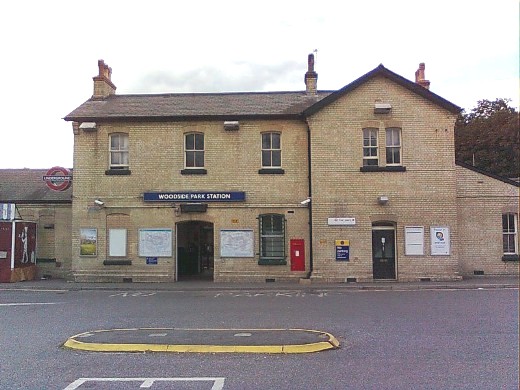
Woodside Park station, a station similar in structure and history to the two previous stations.
|
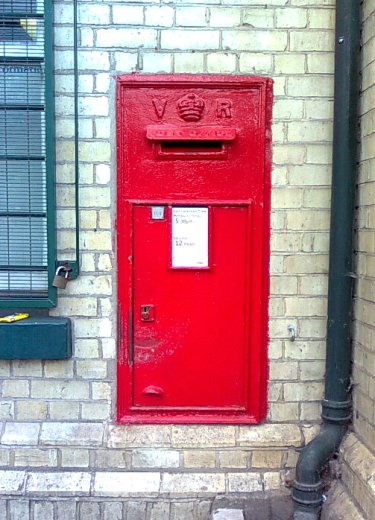
A close-up of the postbox set in the station building wall. It is marked VR which shows that it will have been there from when the building was built.
|
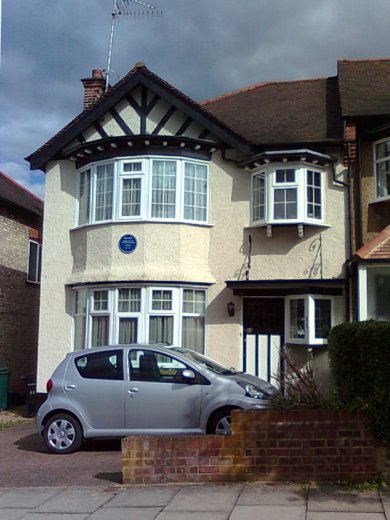
On the way to the next station past the house with a blue plaque where the designer of the original Tube map, Harry Beck, lived from 1936 to 1960.
|
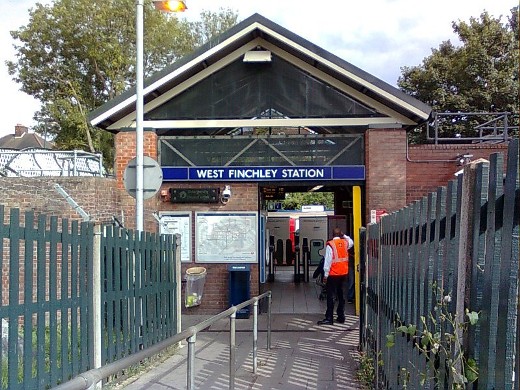
West Finchley station was opened in 1933 by the London & North Eastern Railway and incorporated into the Northern line along with the previous stations in 1940.
|
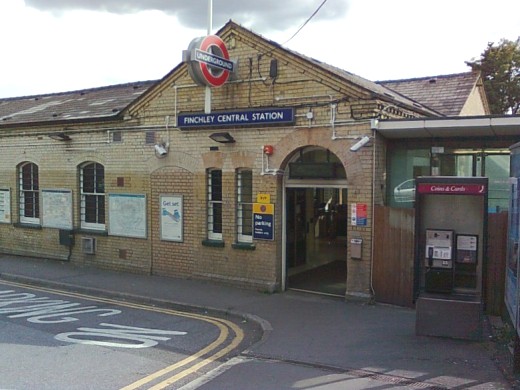
Finchley Central station, the junction for the short branch to Mill Hill East.
|
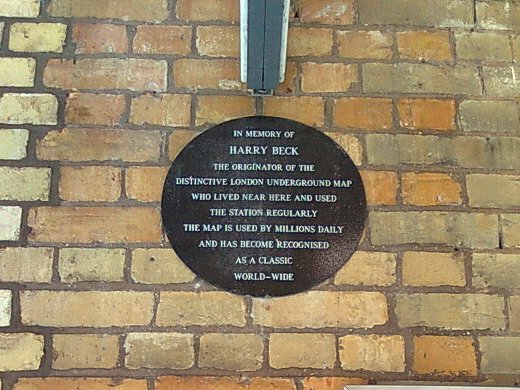
On the southbound platform, a commemorative plaque for Harry Beck, who used Finchley Central station regularly.
|
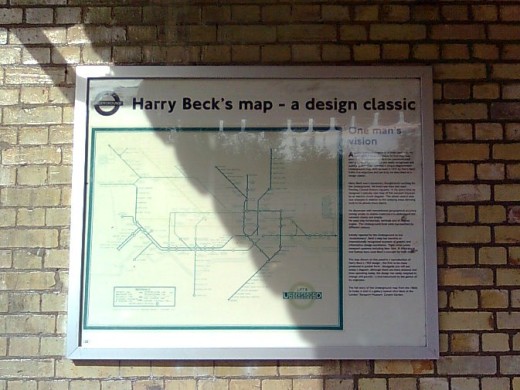
Also on the platform, a facsimile of Harry Beck's 1933 design.
|
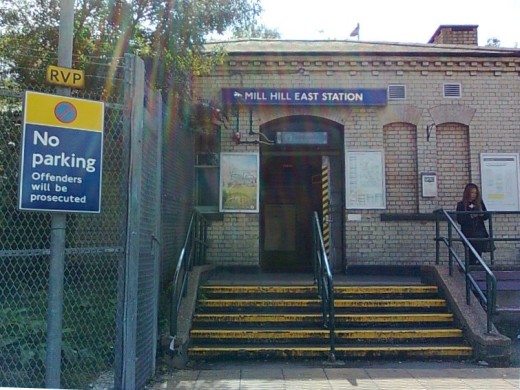
Mill Hill East station, the terminus of a branch of its own running from Finchley Central station. Along with Chesham on the Metropolitan line, Mill Hill East is one of only two stations on the network to have a single platform.
|

On the walk back to Finchley Central station, the Northern line track runs 60 feet above Dollis Road on Dollis Brook Viaduct. The viaduct has 13 spans and is named after the stream that runs beneath it. The trains here are at the highest point above ground level on the Underground system.
|
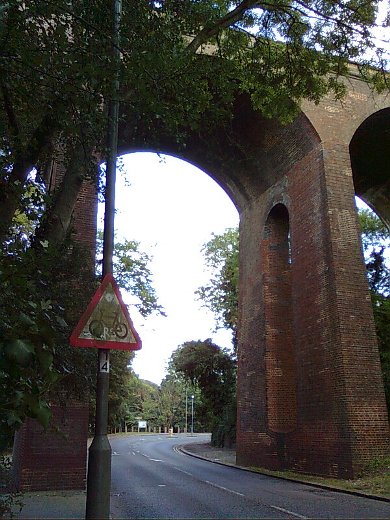
Closer to the viaduct giving some idea of its size.
|
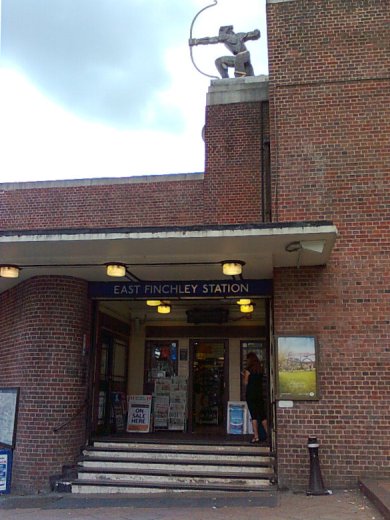
East Finchley station with an archer on the roof aiming an arrow into the tunnel. The line stays in tunnel until just before the terminus at Morden.
|
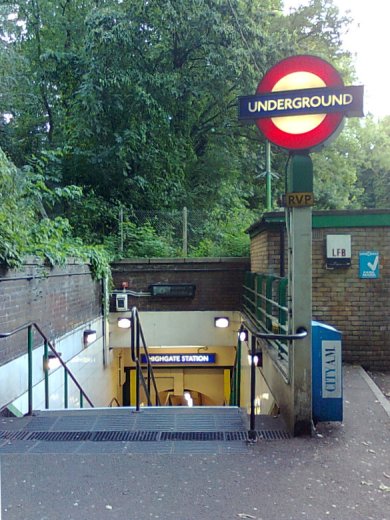
Highgate station, which opened in 1939, was constructed below the surface station of the London and North Eastern Railway. The tube station was used as a shelter during the Second World War and it is said that in 1944 the entertainer, Jerry Springer, was born there although TfL holds no record of the birth.
|
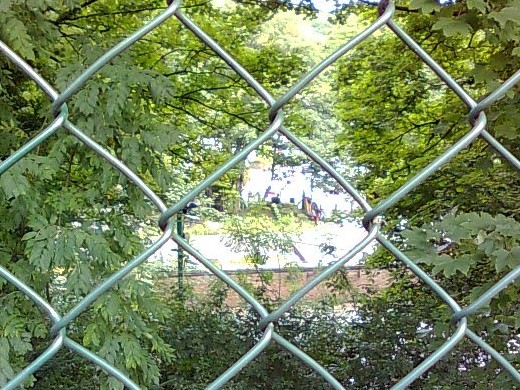
The building and platforms of the upper station are now abandoned although some evidence still remains and can just be seen through the trees from the road.
|
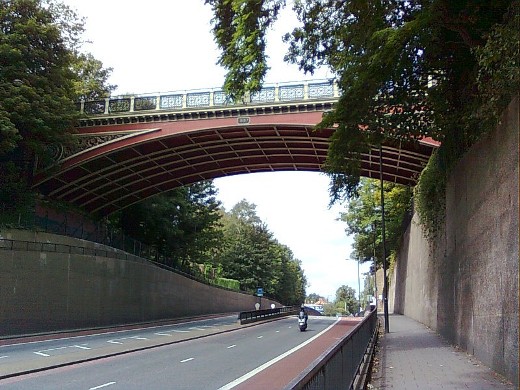
On the way to the next station, a bridge with decorative spandrels reminiscent of some of the Thames bridges. Hornsey Lane Bridge was built in 1897 when the road tunnel being dug underneath collapsed. The tunnelling was abandoned and a cutting with a bridge constructed instead.
|
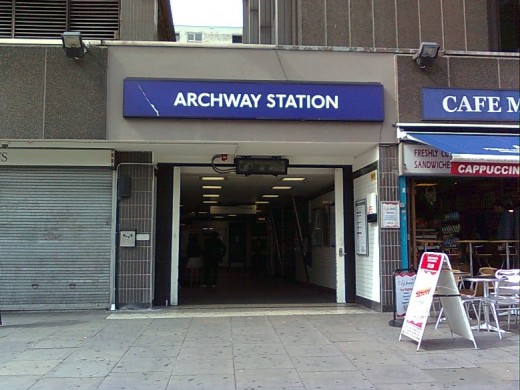
Archway station opened in 1907. The original station building was designed by Leslie Green with the distinctive ox-blood faience blocks but has been replaced since.
|
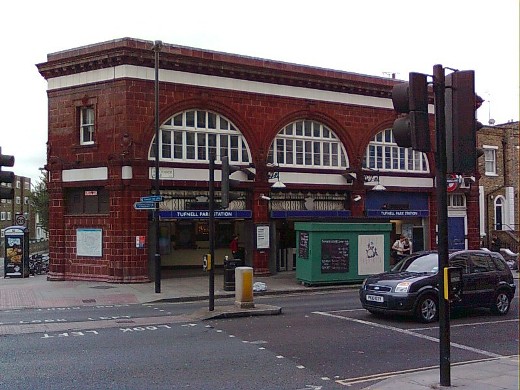
Tufnell Park station was opened in 1907 as part of the Charing Cross, Euston & Hampstead Railway which later became part of the Northern line. Along with the next few stations on this line, it is a Leslie Green design.
|
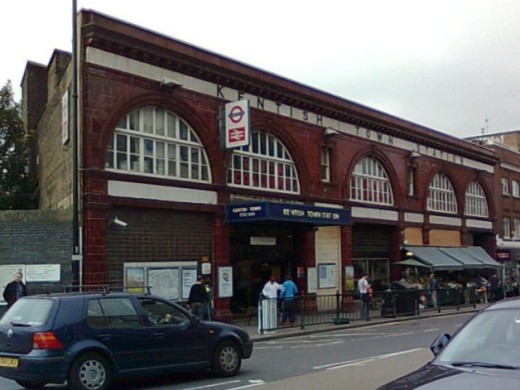
Kentish Town station.
|
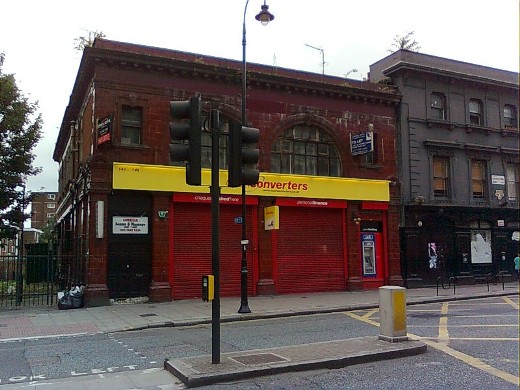
On the way to the next station, the abandoned South Kentish Town station, open from 1907 until 1924. It was closed during a power station strike and never reopened. Remains of the platforms and passages can be seen from passing trains.
|
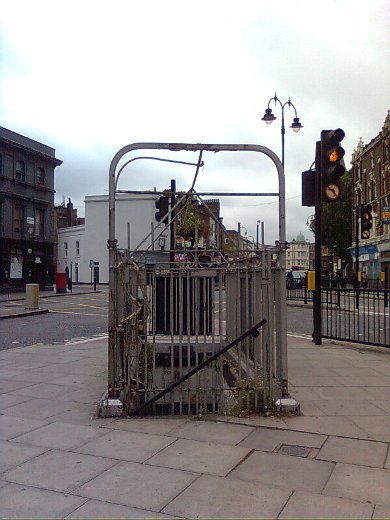
Over the road, a closed subway entrance which presumably led to the station. Strangely there is a hanging basket of fresh flowers suspended over the stairwell which does little to make the structure more attractive.
|
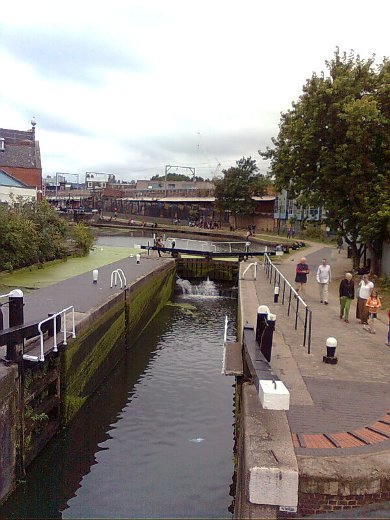
On the way to the next station past Camden Lock.
|
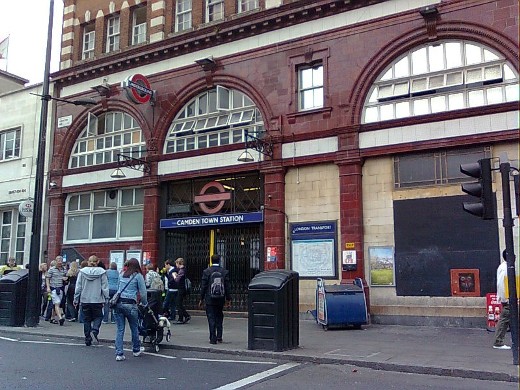
Camden Town station, similar to design to the previous few stations. In 1940 a deep level air raid shelter was constructed below the platforms originally for use by service personnel but later opened up for use by the public. The two entrances to the shelter can still be seen nearby. From here the walk follows the Bank branch of the Northern line.
|
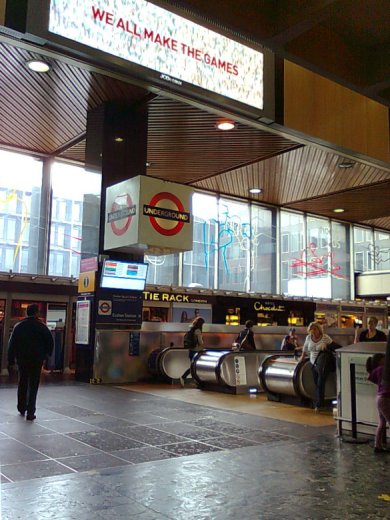
The entrance to Euston station is via escalators inside the mainline station. The original Bank branch station was closed in 1914 and has since been totally demolished.
|
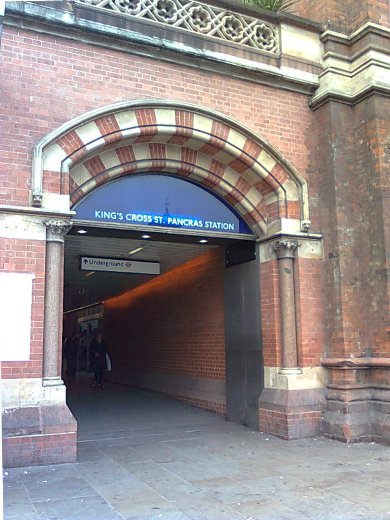
One of the many entrances to King's Cross St Pancras, the biggest interchange station on the London Underground, serving six Tube lines as well as two National Rail stations. The first Underground station at King's Cross opened in 1863 and has been rearranged several times since. The most recent upgrade to the Tube station was completed in 2010 with new ticket halls and 300 metres of new passageways being constructed.
|
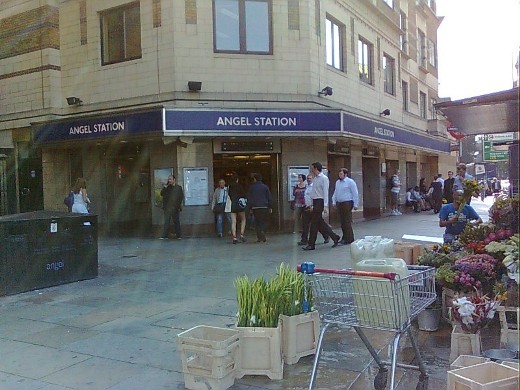
Angel station was opened in 1901 by the City & South London Railway. It was completely rebuilt in 1992 and along with a new station building, the lifts were replaced with escalators. Because the new station entrance was so far from the platforms, extra long escalators had to be installed. At 197 feet long with a 90 foot drop they are the longest on the Underground network.
|
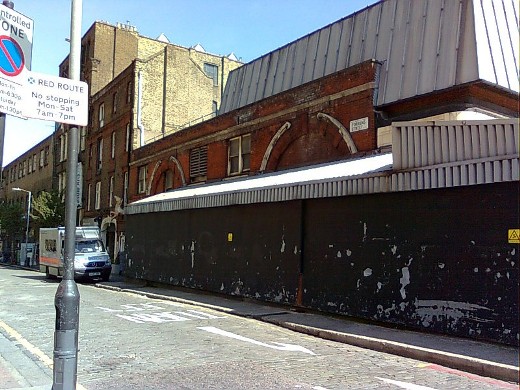
The old station building round the corner.
|
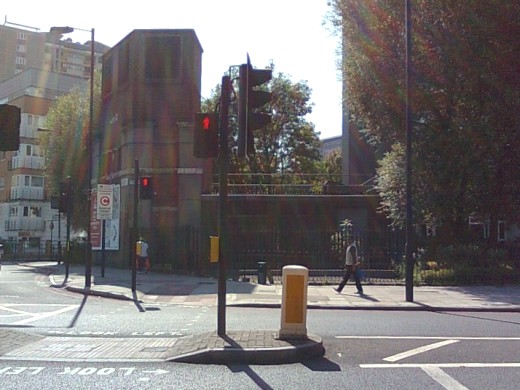
Between Angel and the next station once stood City Road station. All that remains today is the lift shaft now used for ventilation. In 1922 the line was closed while the tunnels were widened and the decision made not to reopen this station. The platforms can still be seen from passing trains.
|
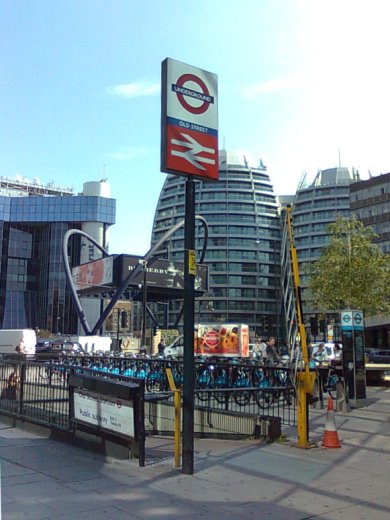
Old Street station. With no surface buildings, the subsurface entrance is in a small shopping precinct under Old Street roundabout. The original station buildings were demolished in 1967 when the roundabout was built.
|
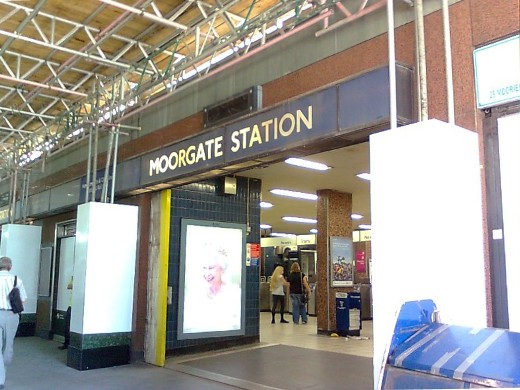
Moorgate station, formerly Moorgate Street station. Below, hidden away, amongst a number of disused tunnels and subways, is a Greathead shield still embedded in the walls of a tunnel it was carving out when the building of an extension to Lothbury was abandoned in 1903.
|
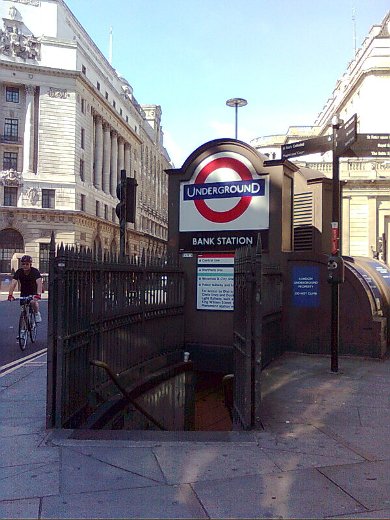
Bank station was opened in 1900 by the City & South London Railway as part of the extension from Borough to Moorgate. It replaced the earlier terminus of the line, King William Street station. Bank station is now served by three Underground lines and the Docklands Light Railway, and is interlinked with Monument station giving easy access to two more Underground lines. The station has many stepped entrances connected underground by a mass of tunnels.
|
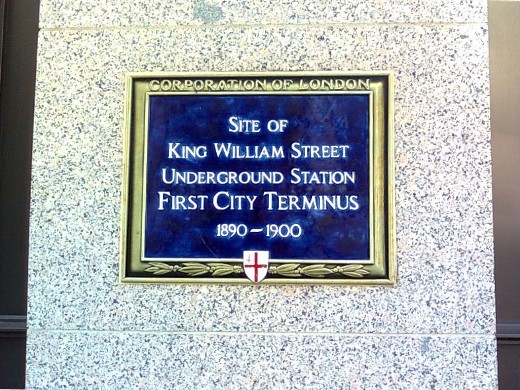
A commemorative plaque on Regis House where access to the old King William Street station is through the basement.
|
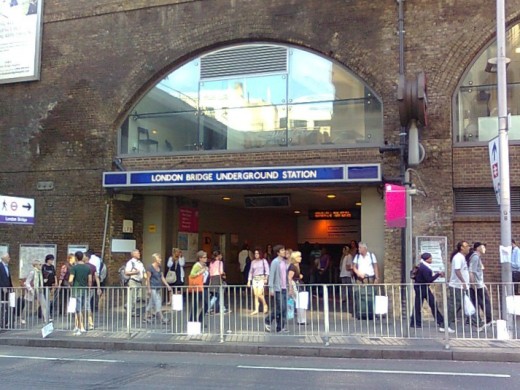
London Bridge station the walk to which took us over London Bridge itself.
|
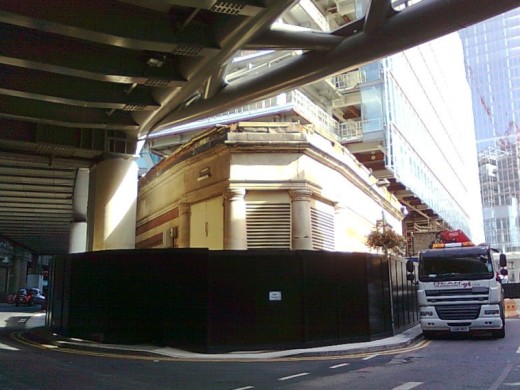
The remains of the original London Bridge station building on the corner of London Bridge Street and Station Approach.
|
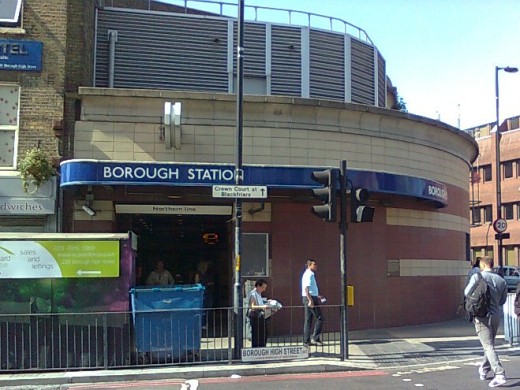
Borough station.
|
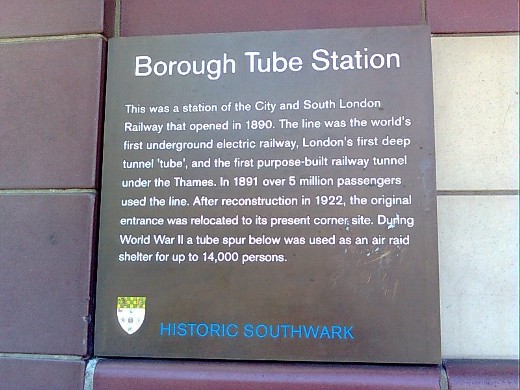
A plaque on the station wall.
|
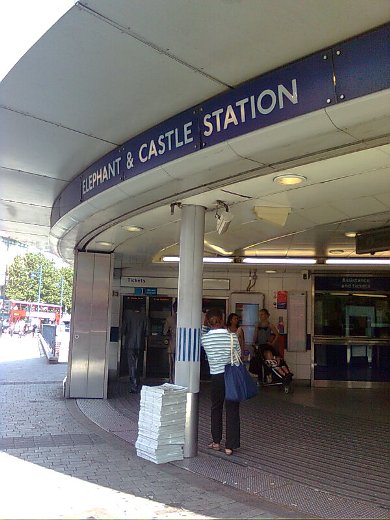
The southern entrance to Elephant & Castle station built in 1890 as part of the City & Southern London Railway. On the other side of the roundabout, the northern entrance was built for the Bakerloo line and opened in 1906 when the two stations were connected below ground.
|
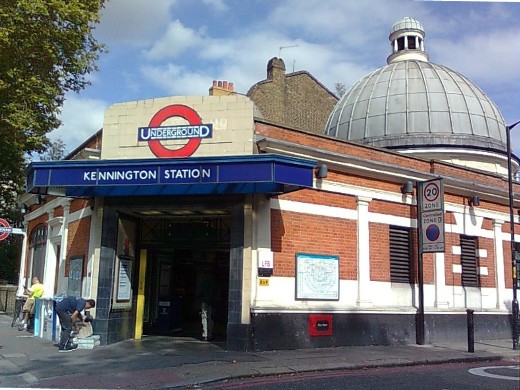
Kennington station served by trains from both the Bank branch and the Charing Cross branch. Some trains will terminate here while others will go on to Morden.
|
|
|
Northern Line continued
|
